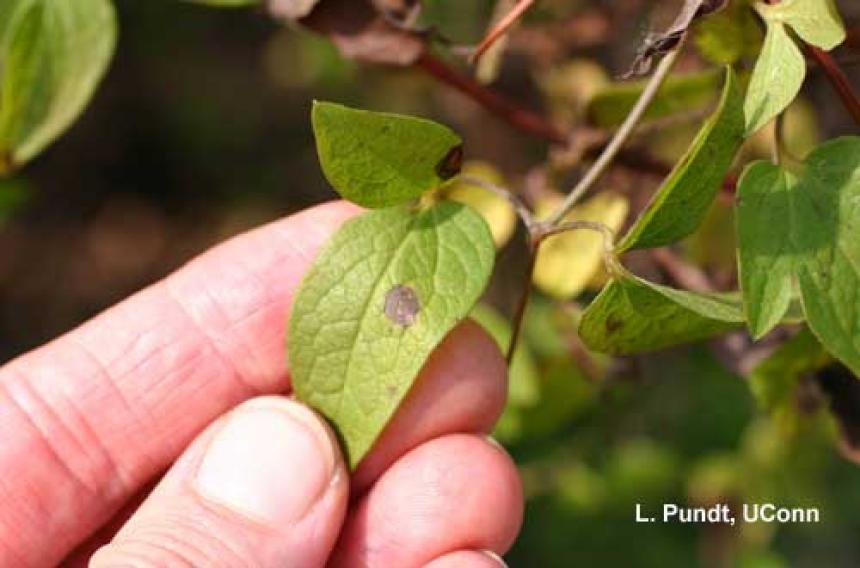This photo shows leaf spot on Clematis caused by the fungus Ascochyta clematidina. This fungus also causes stem rot and wilt. Symptoms begin as water-soaked areas on the leaves. These spots are dark brown to black, and irregular in shape. The fungus grows down the petiole and into the stem causing stem cankers which results in the sudden collapse and wilting of individual shoots. Note that Clematis vines can also wilt back due to environmental conditions, or due to mechanical injury from rough handling. Thin out the vines to improve air movement and ventilation in the planting. Remove and destroy all diseased leaves as they occur so the disease doesn't spread to the stems. Likewise, prune out and destroy infected vines to reduce inoculum being sure to prune low enough on the vine to remove all of the infected tissue.
Prevent the disease by applying fungicides before symptoms begin.The fungicide thiophanate-methyl (Cleary's 3336 F) is labeled for Ascochyta wilt. Formulations of wettable sulfur can also be used. Applications should be made early in the spring and special attention should be given to getting good coverage of the stumps from previous years growth which may harbor the fungus. Clematis hybrids and cultivars vary in their susceptibility to Ascochyta blight. Clematis types such as Clematis alpina, Clematis macropetala (blue, early spring), Clematis montana (pink), and Clematis viticella and some of their cultivars are reported to be resistant. These are all small-flowered varieties and less exciting to most gardeners. If the particular cultivar in the landscape consistently dies back, perhaps it is time to change to a new cultivar and perhaps a new planting site. There are reports that clematis plants sometimes recover from this disease because the fungus generally doesn't attack the roots. Thus, new healthy shoots can appear later, perhaps even into the next year
